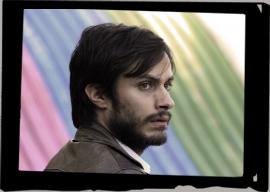No at the Hyde Park Picture House, reviewed by Sally Cooper (@sallycatriona)…
I hold my hands up at this point and admit that I know very little about Latin American culture and history. I will also admit that as babysitters have been a bit thin on the ground in the last few years I now tend to choose what film to see based on what is showing on the nights that I have a willing ‘sitter. So it was a good thing that this time round my chance to leave the house coincided with ‘No’ being shown at the Hyde Park Picture House.
Built in 1914, the Hyde Park Picture House is a friendly and familiar part of the Leeds cultural scene. Going in with friends who had spent their university years in this city I listened to them reminiscing about the memories brought back by our approach to the picture house down Brudenell Road and our few moments in the queue. Even the entrance to the cinema takes you back to another era, when a night out at the cinema really was something special.
‘No’ is set during the 1988 plebiscite, when after fifteen years of military dictatorship General Pinochet of Chile staged a yes/no election to decide whether he should continue as leader. The film revolves around the making of the television adverts for the ‘yes’ and ‘no’ campaigns and follows a young advertising guru played by Gael Garcia Bernal who persuades the collection of serious-minded politicos leading the ‘no’ campaign to adopt a bright and breezy corporate-style advertising genre to get their message across.
The film successfully conveys both the gravity of the campaign message and the building tension for those involved in the opposition movement with humour and without ever becoming too earnest. Each of the central characters is flawed in one way or another; no-one becomes a perfect hero, leaving the viewer to question whether he or she would have the courage to stand up against a regime as they did. Despite the ultimate legitimacy of the vote the film makes it clear that those involved in the opposition campaign came under threat from the authorities and risked reputation and worse in order to make their voices heard.
Shot on low-definition magnetic tape of a type similar to that used by television news crews in the 80s, the film seems authentic without ever becoming worthy. The use of the old-style film also means that in the sections where footage from that era is woven into the story it doesn’t jar in the way that kind of mix sometimes can.
The film also prompts the viewer to consider our acceptance of political messages delivered through this kind of medium now, as in the late 80’s this was a relatively new thing.
‘No’ is definitely worth viewing and if you have missed it at the marvellous Hyde Park Picture House there’s still a chance to see it at the equally inviting National Media Museum in Bradford from the 22nd February.
